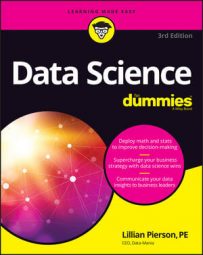- Simple inference from mathematical models: BI generates predictions based on simple mathematical inference, and not from complex statistical predictive modeling. Many of the simpler EI solutions derive their predictions from simple mathematical inference as well.
- Data structure and type: Like BI, many of the simpler EI products are built solely from structured data that sits in a relational SQL database.
- Decision-support product outputs: Both EI and BI produce data visualizations, maps, interactive data analytics, and tabular data reports as decision-support products.
Here are a few data science processes you won't find used in BI but will find in EI technology:
- Statistical programming: The most basic EI solutions deploy time series analysis and autoregressive modeling. Many of the more advanced solutions make use of complex statistical models and algorithms as well.
- GIS technology: Because environmental insights are location-dependent, it's almost impossible to avoid integrating geographic information systems (GIS) technologies into EI solutions. Not only that, but almost all web-based EI platforms require advanced spatial web programming.
- Web-based data visualization: Almost all web-based EI platforms offer interactive, near–real-time data visualizations that are built on the JavaScript programming language.
- Data sources: Unlike BI, EI solutions are built almost solely from external data sources. These sources often include data autofeeds derived from image, social media, and SMS sources. Other external data comes in the form of satellite data, scraped website data, or .pdf documents that need to be converted via custom optical text-recognition scripts. In EI, the reported data is almost always updating in real-time.
Web-scraping is a process that involves setting up automated programs to scour and extract the data you need straight from the Internet. The data you generate from this type of process is commonly called scraped data.
- Coding requirements: EI solutions almost always require advanced custom coding. Whether in the form of web programming or statistical programming, extra coding work is required in order to deliver EI products.

